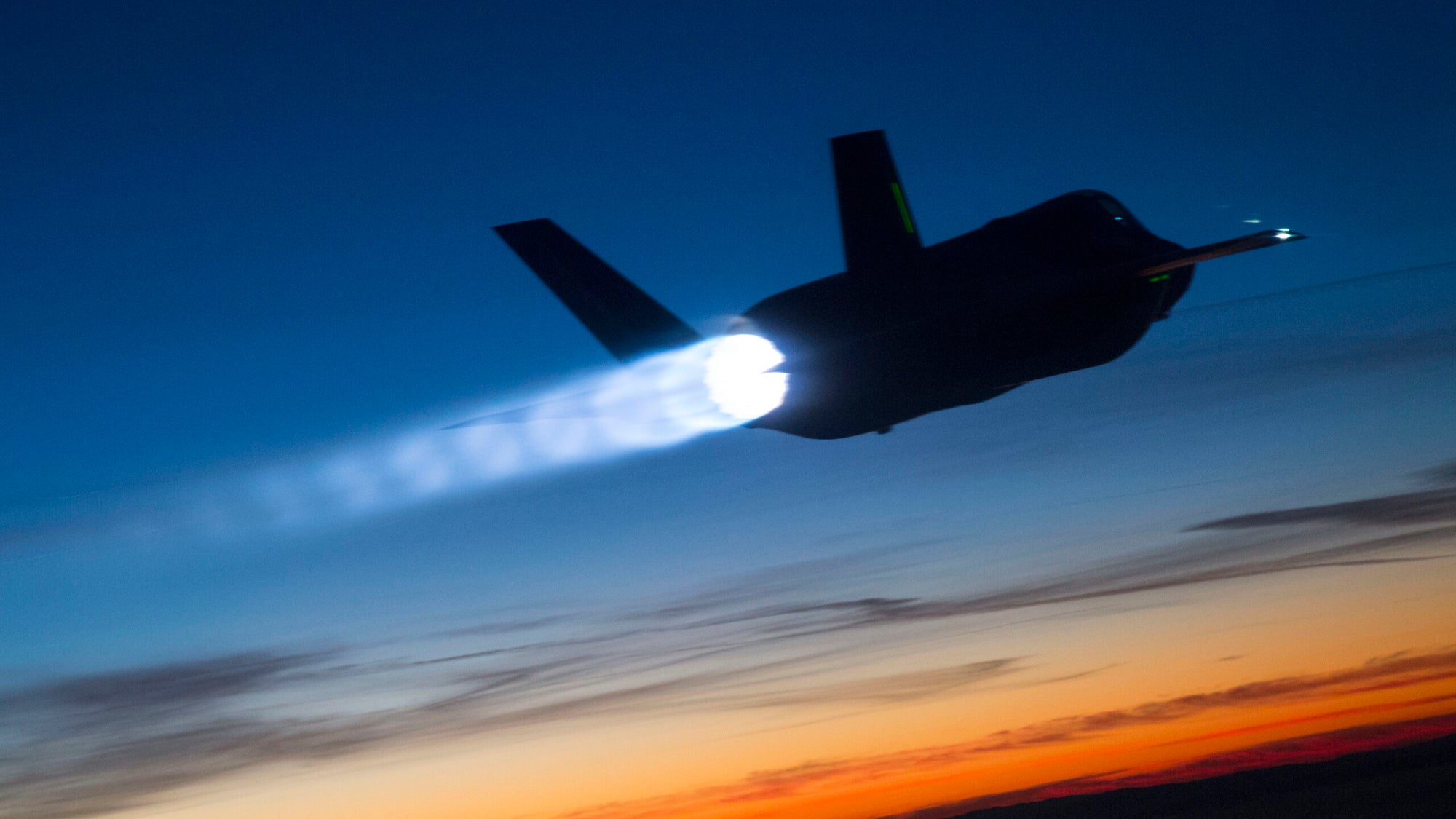Bhurki
ACCESS: Secret
- Joined
- 16 July 2020
- Messages
- 345
- Reaction score
- 379
I can give you 2 x 55k max (considering it needs to fit into F135 dimensions)I want to see 2X 70k thrust on NGAD!
I can give you 2 x 55k max (considering it needs to fit into F135 dimensions)I want to see 2X 70k thrust on NGAD!
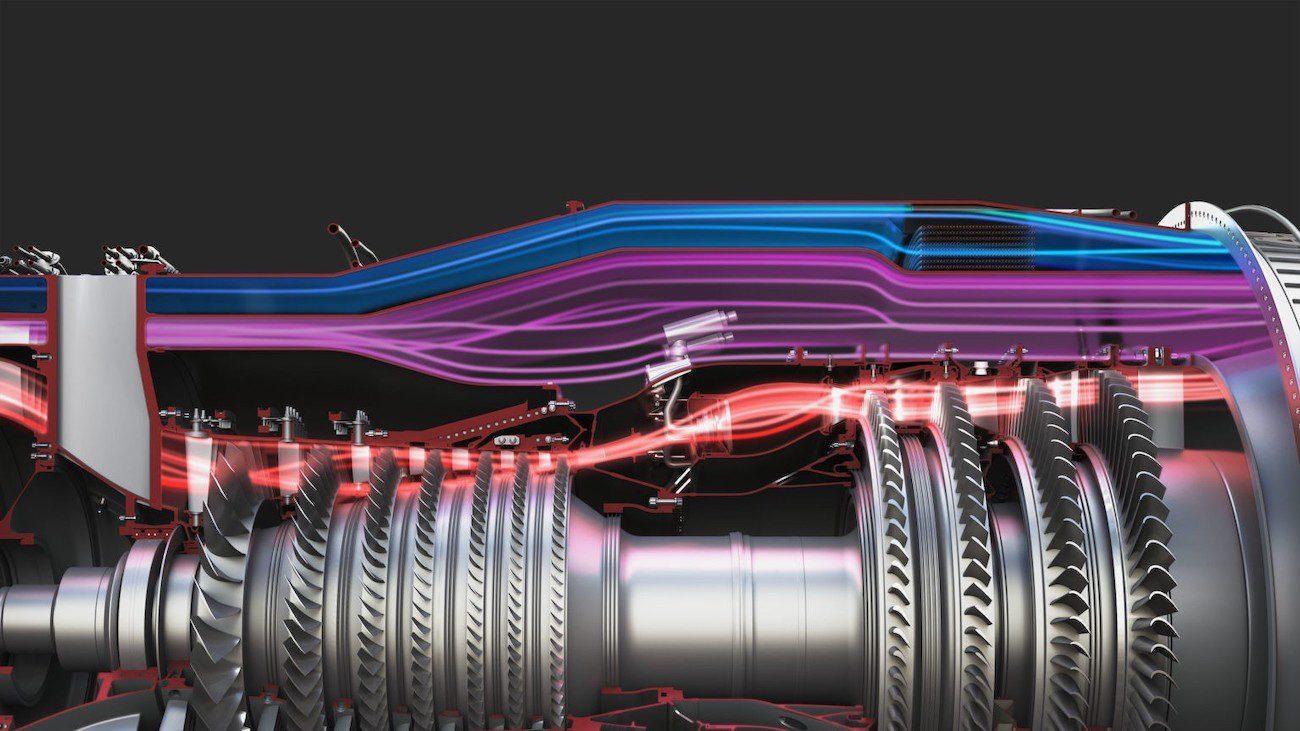
 gbp.com.sg
gbp.com.sg
Every fighter training mission I’ve seen at Luke and Nellis AFB continued until the fuel state reaches Bingo. Longer mission maybe, but the same amount of CO2 produced. Everybody has to include their environmental credentials these days, even when it really doesn’t matter in final result.I got a kick out of this sentence
GE Concludes Phase 1 Testing on Second XA100 Adaptive Cycle Engine
GE has concluded phase 1 testing on its second XA100 adaptive cycle engine as part of the U.S. Air Force’s Adaptive Engine Transition Program (AETP). Phasgbp.com.sg
———————————
“The XA100’s improved fuel efficiency provides significant reduction in carbon emissions.”
———————————
Maybe they can regulate warfare to maximum carbon emissions allowed. Too much CO2 wars over other side wins
That’s how I describe my fists and mouth in a fight.Reminds me of the tempest next gen fighter advertisement that called weapons and EW warfare as "kinetic and non kinetic effectors". Was amusing but slightly unsettling too.
On Friday, the Air Force made the first meaningful step toward sourcing advanced new adaptive cycle engines for its primary stealth fighter, the F-35. These new engines, while still a ways from service, would offer a significant leap in capability for the aircraft practically across the board, giving the F-35 an advantage over the growing slew of foreign 5th generation competition.
The branch issued a “sources sought notice” for planning purposes only, which means we’re still a long way off from putting these next-generation engines in America’s top-tier fighters, but it could be well worth the wait.
In order to do so, these engines are designed to operate in different “modes.” When the pilot needs the engine’s peak performance in combat, he or she can lean hard on the throttle and the engine’s management system will take its cue to switch into its heavy-burning high-thrust mode. Conversely, while on a patrol, the engine would stay in its high-efficiency, low-burning mode to stretch the mileage or loiter time provided by each gallon of fuel.“The goal for the Air Force was to develop the next-generation fighter engine architecture and technologies to provide a generational step-change in combat propulsion capability,” David Tweedie, GE Edison Works’ General Manager of Advanced Combat Engines, told Sandboxx News last May.
“GE has worked hard to achieve the challenging objectives the Air Force has set out, and we believe we are delivering on what they’ve asked us to do.”
Incredibly, we’re not just talking about matching the power output of previous engines while increasing range… we’re talking about a 10% or better increase of thrust practically across the flight envelope alongside a 25% or better jump in range.“The mode transition is seamless to the pilot, and they won’t even know when it happens,” Tweedie said.
“They will control engine power using the throttle the way they always have, and the engine schedule will determine the appropriate operational mode.”
More range, more power, more capability
While the Air Force is now exploring the idea of sticking these engines under the hoods of F-35As, that boost in range would be especially valuable to the Navy. The F-35C has a total range of approximately 1,200 nautical miles, giving it a 600 mile combat radius in the best of times. That’s not far enough to launch sorties at China without putting America’s carriers in range of China’s hypersonic anti-ship weapons. A 25% boost in range, say to 750 miles, isn’t enough to eliminate this capability gap, but it’s a step in the right direction.
GE tested their XA100 at their high altitude test cell in Evendale, Ohio over the span of more than three months, starting at the tail end of 2020. According to their reports, their XA100 actually exceeded their performance targets on top of successfully demonstrating its ability to operate in both high-thrust and low-burn modes. The engine produces a total of 45,000 pounds of thrust, slightly better than the 43,000 pounds offered by the F-35’s current Pratt & Whitney F135-PW-100 afterburning turbofan.
The aim of the program was to increase thrust by 10% and fuel efficiency by 25% over conventional designs, but in testing, the engine did even better than that.
While this new engine’s ability to seamlessly transition between tearing through the sky like a top fuel dragster and minding the fuel gauge like a Toyota Prius might catch the attention of aviation enthusiasts, it might be the engine’s thermal management and use of advanced component technologies that really make the XA100 a huge leap forward in fighter engines.“Not only are we meeting that, we’re actually exceeding that pretty much everywhere in the flight envelope—and in a few places—up to 20% [more thrust],” Tweedie said. “We are very happy with where we are from thrust in terms of over-delivering versus the program requirement.”
“When you translate that to what it means to the platform, it’s 30% more range or 50% more loiter time depending on how you want to utilize that fuel burn improvement. It’s a significant increase in acceleration and combat capability with the increased thrust,” he added.
According to Tweedie, the XA100’s “three-stream architecture” enables a doubling of thermal management capacity, or in other words, a real reduction in the heat created by the engine’s operation. Heat is currently a limiting factor in power production for fighters, which have to limit their output to avoid damaging the aircraft itself. That will no longer be the case with the new generation of adaptive cycle engines, meaning fighters will have more electrical power to run systems.
“We see a significant increase in capability there [with] up to two times mission systems growth enabled by the [improved] thermal management,” Tweedie said.
[...]According to GE, advanced component technologies used in the construction of their XA100 engine, including additive and Ceramic Matrix Composites, also reduce the overall weight of the engine while also increasing durability over previous designs.
The result combination of power, fuel efficiency, heat management, and resilient but lightweight construction make the XA100 the physical embodiment of a fighter engine wish-list. While any of these improvements in capability would be welcome in most fighter designs, the collection of them in a single system could well make for a power plant that is even greater than the sum of its parts.
Of course, a sources sought notice is no guarantee that these new adaptive cycle engines will find their way into America’s F-35s, but this new approach to engine design will almost certainly be incorporated into future platforms, like the Air Force’s Next Generation Air Dominance fighter.

 www.sandboxx.us
www.sandboxx.us
GE begins industry’s first adaptive cycle engine tests at Arnold Engineering Development Complex
March 30, 2022
TULLAHOMA, Tenn. – The U.S. Air Force and GE on March 25th initiated Phase 2 testing of GE’s second XA100 adaptive cycle engine at the Air Force’s Arnold Engineering Development Complex (AEDC). This milestone marks the first test of an Adaptive Engine Transition Program (AETP) engine at AEDC.
“AEDC’s advanced testing facilities are a unique national asset. We’re thrilled to begin testing here and continue maturing this propulsion system that we believe represents the future of the F-35,” said David Tweedie, GE Edison Works’ general manager for Advanced Combat Engines. “Our testing to date has validated the XA100’s transformational capability, and we’re looking forward to seeing the performance data from Phase 2 testing.”
GE completed Phase 1 testing of this XA100 test engine in November 2021 in Evendale, Ohio. Phase 2 testing will take place entirely at AEDC, representing the capstone of AETP and signaling readiness to transition this technology into full-scale development...
Decision on New F-35 Engines Predicted in 2024 Defense Budget
May 17, 2022 | By Greg Hadley
Whether the F-35 fighter will get new engines from the Air Force’s cutting-edge Adaptive Engine Transition Program is a question that needs to be resolved at the Defense Department level, Air Force Secretary Frank Kendall told lawmakers May 17—and he anticipates an answer in the 2024 budget.
“There are a number of options to improve the performance of the F-35 engine,” Kendall told the Senate Appropriations defense subcommittee. “The problem we have is that it’s a fairly complicated situation.”
For months now, members of Congress, Air Force officials, industry partners, and the F-35 Joint Program Office have talked about potential changes to the F-35’s F135 engine manufactured by Pratt & Whitney. Options have included either a modernized F135 “Enhanced Engine Package” or an advanced engine from AETP, which would provide substantial increases in performance and efficiency.
Engines from AETP are likely to power the Air Force’s planned sixth-generation fighter, the Next Generation Air Dominance platform. But both Congress and the Air Force has expressed an interest in getting those engines on the F-35 as well—lawmakers have introduced legislation requiring such a change starting in 2027, and Kendall said early in his tenure that he’d like to do so if it’s affordable.
That, however, has been a major sticking point. The Joint Program Office has made clear that any member of the F-35 program that wants to be “different” has to pay the full cost for that, which would include the development and integration of the AETP engines.
It’s unclear whether the Navy, the Marine Corps, or any of the other nations in the F-35 program are interested in splitting the costs of such an effort with the Air Force. GE Aviation, the maker of one of the AETP engines, has said its engine wouldn’t be able to go in the Marines’ F-35Bs and would need modifications for the Navy’s F-35Cs.
None of the other services or partners have agreed on the need for the AETP engine, Kendall confirmed to Sen. Susan Collins (R-Maine).
“Each of the services and each of our partners is in a different situation with regard to the economics of doing that and the performance requirements,” Kendall said. “We have the largest fleet in the Air Force—we will have the largest fleet. So we have the greatest interest in this, I think, but there’s a significant cost associated with a brand new engine, development of that. It’s less expensive to do an upgrade, perhaps, and get increased performance, and then there are other options in between.”
With so many different perspectives and needs to juggle, Kendall said that the Office of the Secretary of Defense will need to make a final call on any changes, seemingly hinting that the Air Force won’t look to “go it alone” with their own separate effort.
“The Department of Defense has to make a decision overall about engine modifications and upgrades for the F-35. I expect that process to take place over the next few months as we build the [2024] budget,” Kendall told Collins. “What the Air Force has funded is continuing the AETP technology development, but we’re going to need to have a decision at a higher level about the overall program for F-35 engine modifications and upgrades.”
The Pentagon and the Air Force released their 2023 budget request in late March, and Congress is in the process of marking up that budget. Planning for the 2024 budget, however, is already underway.
“It’s a complicated situation, and we’re going to have to sort it out at the DOD level as we go through the process of preparing the 2024 budget,” Kendall said.
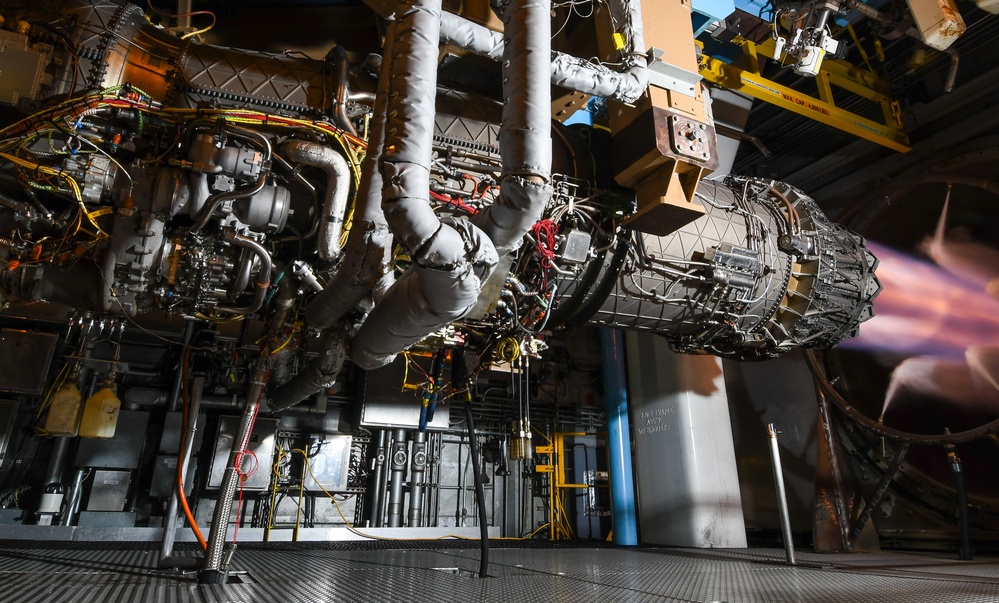
GE’s XA100 Poised To Vie for New F-35 Engine Program
July 04, 2022

The XA100 is undergoing dynamic tests across a range of simulated altitude conditions at AEDC.
Credit: U.S. Air Force
General Electric says the XA100 adaptive-cycle fighter engine is on track to complete an exhaustive two-phase evaluation later this summer as a new U.S. Air Force leadership team moves forward with a proposal to reengine the domestic Lockheed Martin F-35A fleet.
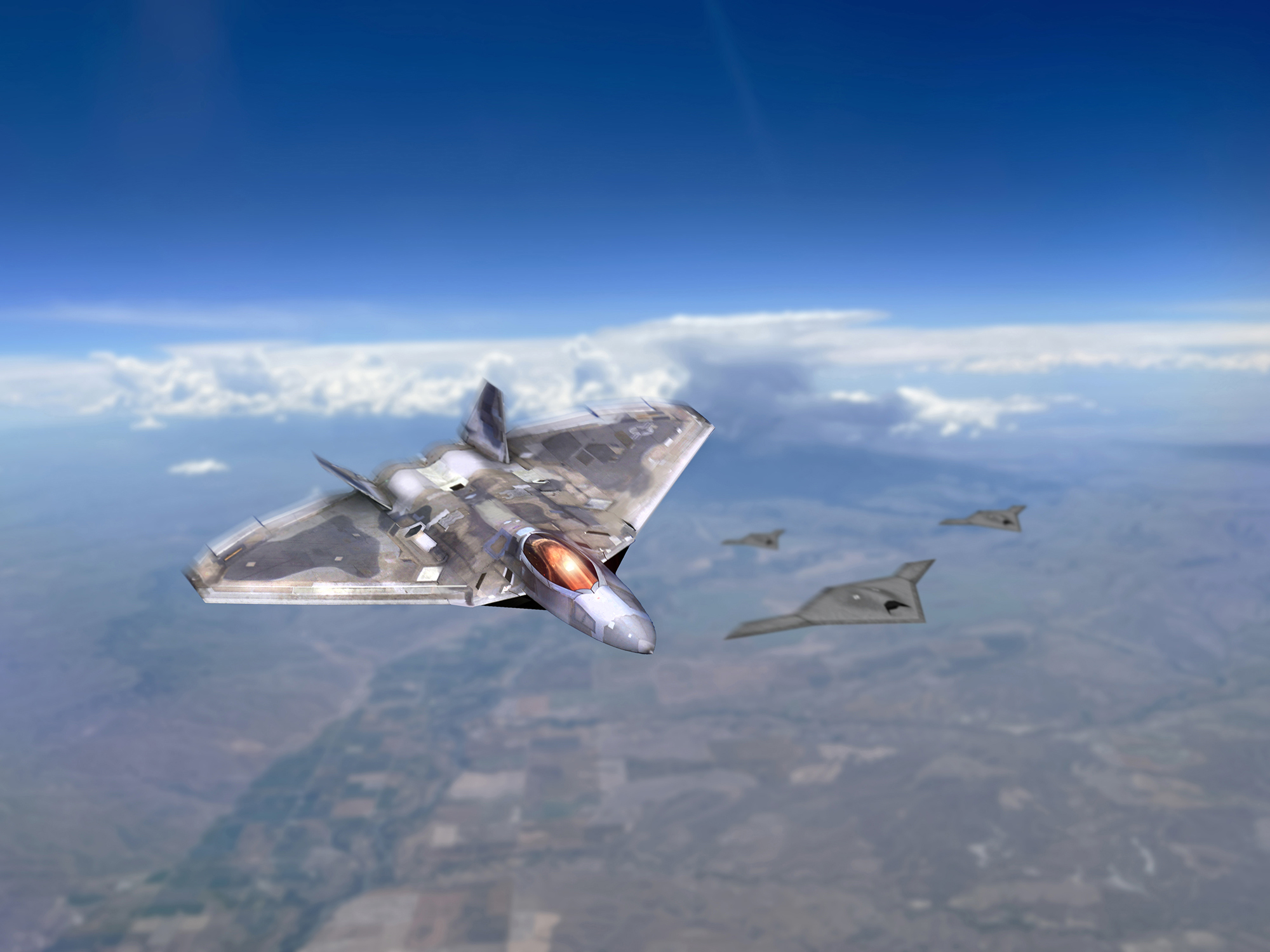
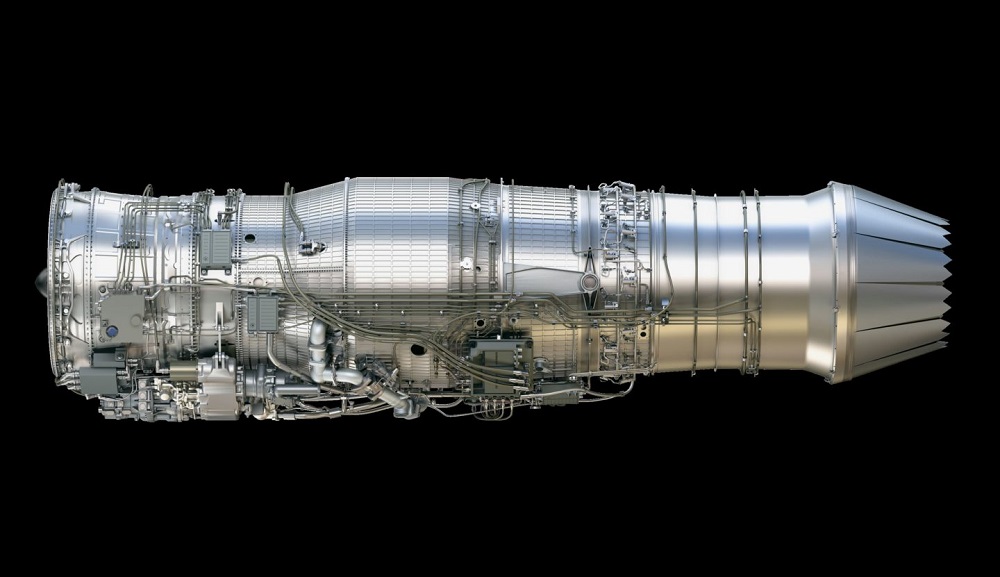
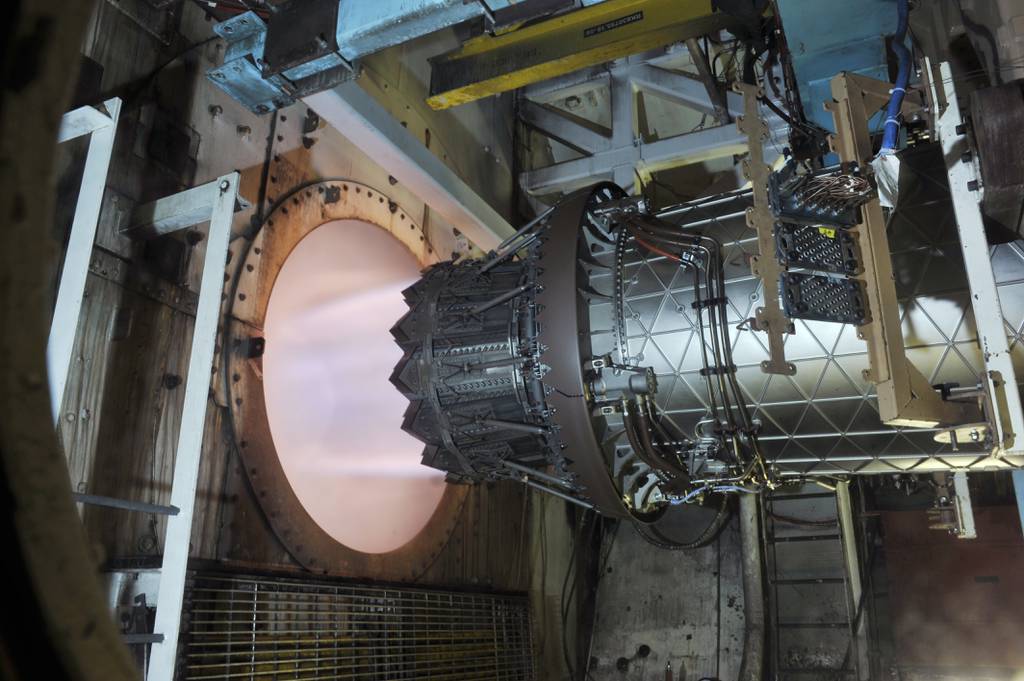
Don’t forget the P&W XA101, which has also demonstrated the AETP performance goals.So basically F-135EEP give 10% improvement in range and thrust and 50% improvement in cooling
XA100 AETP gives 20% improvement in thrust, 30% improvement in range and 100% improvement in cooling.
Though to be fair, if they don't choose the XA100 then it likely stall the tech just like what happen to scramjet tech
Depends. If all the partners and all the variants switch over, then eventually yes. Won't happen overnight, and USAF would hope the Next-Gen program would reach down-select before then. GE's supporters are arguing that if they get canned, the company's going to struggle to keep in the game for the Next-Gen engine without a hot advanced turbine production line.Don’t forget the P&W XA101, which has also demonstrated the AETP performance goals.So basically F-135EEP give 10% improvement in range and thrust and 50% improvement in cooling
XA100 AETP gives 20% improvement in thrust, 30% improvement in range and 100% improvement in cooling.
Though to be fair, if they don't choose the XA100 then it likely stall the tech just like what happen to scramjet tech
But if the F-35 picks the XA101, doesn’t that also cause the same industrial base issue as retaining the F135 in EEP form?
I don't see how. GE is also in the running for the NGAD engine (which is a separate program).Depends. If all the partners and all the variants switch over, then eventually yes. Won't happen overnight, and USAF would hope the Next-Gen program would reach down-select before then. GE's supporters are arguing that if they get canned, the company's going to struggle to keep in the game for the Next-Gen engine without a hot advanced turbine production line.Don’t forget the P&W XA101, which has also demonstrated the AETP performance goals.So basically F-135EEP give 10% improvement in range and thrust and 50% improvement in cooling
XA100 AETP gives 20% improvement in thrust, 30% improvement in range and 100% improvement in cooling.
Though to be fair, if they don't choose the XA100 then it likely stall the tech just like what happen to scramjet tech
But if the F-35 picks the XA101, doesn’t that also cause the same industrial base issue as retaining the F135 in EEP form?
GE's not in the same business position it was when it lost the last two advanced turbine competitions, nor are it's suppliers. Considering the current leadership of their parent company, they may decide not to put in the money to go for a fourth if this one gets deep-sixed.I don't see how. GE is also in the running for the NGAD engine (which is a separate program).Depends. If all the partners and all the variants switch over, then eventually yes. Won't happen overnight, and USAF would hope the Next-Gen program would reach down-select before then. GE's supporters are arguing that if they get canned, the company's going to struggle to keep in the game for the Next-Gen engine without a hot advanced turbine production line.Don’t forget the P&W XA101, which has also demonstrated the AETP performance goals.So basically F-135EEP give 10% improvement in range and thrust and 50% improvement in cooling
XA100 AETP gives 20% improvement in thrust, 30% improvement in range and 100% improvement in cooling.
Though to be fair, if they don't choose the XA100 then it likely stall the tech just like what happen to scramjet tech
But if the F-35 picks the XA101, doesn’t that also cause the same industrial base issue as retaining the F135 in EEP form?
They're ALREADY putting money in the next gen.GE's not in the same business position it was when it lost the last two advanced turbine competitions, nor are it's suppliers. Considering the current leadership of their parent company, they may decide not to put in the money to go for a fourth if this one gets deep-sixed.I don't see how. GE is also in the running for the NGAD engine (which is a separate program).Depends. If all the partners and all the variants switch over, then eventually yes. Won't happen overnight, and USAF would hope the Next-Gen program would reach down-select before then. GE's supporters are arguing that if they get canned, the company's going to struggle to keep in the game for the Next-Gen engine without a hot advanced turbine production line.Don’t forget the P&W XA101, which has also demonstrated the AETP performance goals.So basically F-135EEP give 10% improvement in range and thrust and 50% improvement in cooling
XA100 AETP gives 20% improvement in thrust, 30% improvement in range and 100% improvement in cooling.
Though to be fair, if they don't choose the XA100 then it likely stall the tech just like what happen to scramjet tech
But if the F-35 picks the XA101, doesn’t that also cause the same industrial base issue as retaining the F135 in EEP form?

So basically F-135EEP give 10% improvement in range and thrust and 50% improvement in cooling
XA100 AETP gives 20% improvement in thrust, 30% improvement in range and 100% improvement in cooling.
Though to be fair, if they don't choose the XA100 then it likely stall the tech just like what happen to scramjet tech
I remember P&W said their XA101 can only fit inside F-35A but will have issue with F-35C that will need some development work and impossible to fit in F-35BDon’t forget the P&W XA101, which has also demonstrated the AETP performance goals.So basically F-135EEP give 10% improvement in range and thrust and 50% improvement in cooling
XA100 AETP gives 20% improvement in thrust, 30% improvement in range and 100% improvement in cooling.
Though to be fair, if they don't choose the XA100 then it likely stall the tech just like what happen to scramjet tech
But if the F-35 picks the XA101, doesn’t that also cause the same industrial base issue as retaining the F135 in EEP form?
Remember that both the XA100 and XA101 are X engines - ground technology demonstrators. The 2024 down select, if they decide to proceed, will be based on proposals where the production configuration and development program will be described to achieve a flight and production capable engines by 2030. There is plenty of time for P&W to make the changes necessary to make their A101 engine fit the F-35C.I remember P&W said their XA101 can only fit inside F-35A but will have issue with F-35C that will need some development work and impossible to fit in F-35BDon’t forget the P&W XA101, which has also demonstrated the AETP performance goals.So basically F-135EEP give 10% improvement in range and thrust and 50% improvement in cooling
XA100 AETP gives 20% improvement in thrust, 30% improvement in range and 100% improvement in cooling.
Though to be fair, if they don't choose the XA100 then it likely stall the tech just like what happen to scramjet tech
But if the F-35 picks the XA101, doesn’t that also cause the same industrial base issue as retaining the F135 in EEP form?
By contrast, GE said their XA100 can easily fit in F-35A and F-35C with no structural redesign of either aircraft is required, they also study the option to adapt it on F-35B
GE Studies XA100 Adaptive Engine Option For F-35B | Aviation Week Network
The F-35 JPO, Lockheed and Rolls-Royce are working with GE on the effort.aviationweek.com
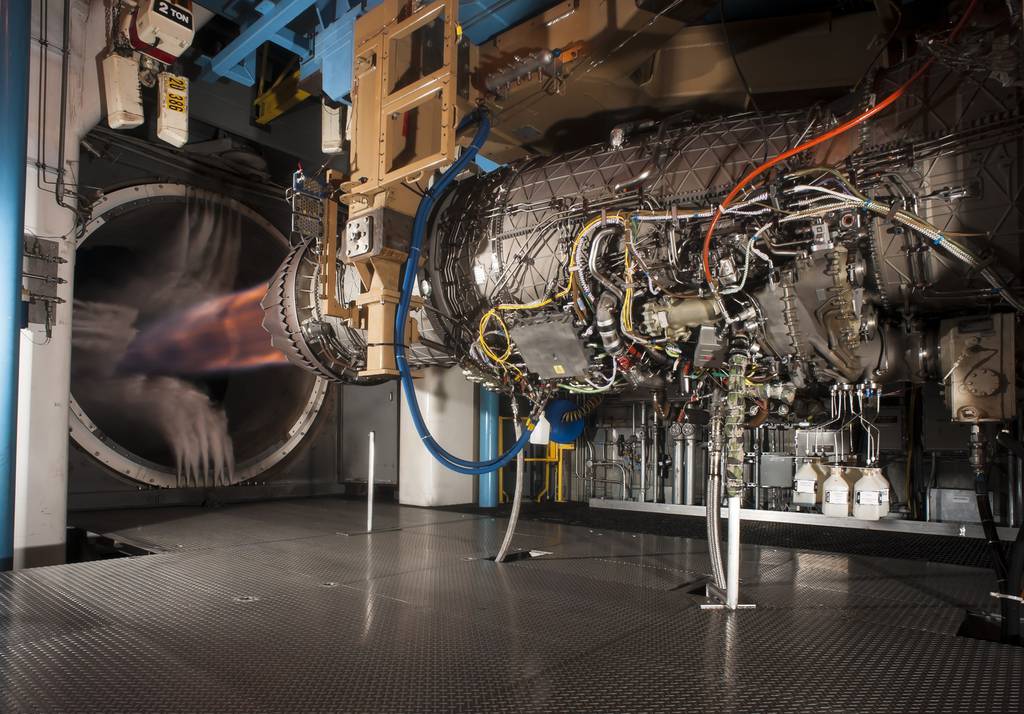
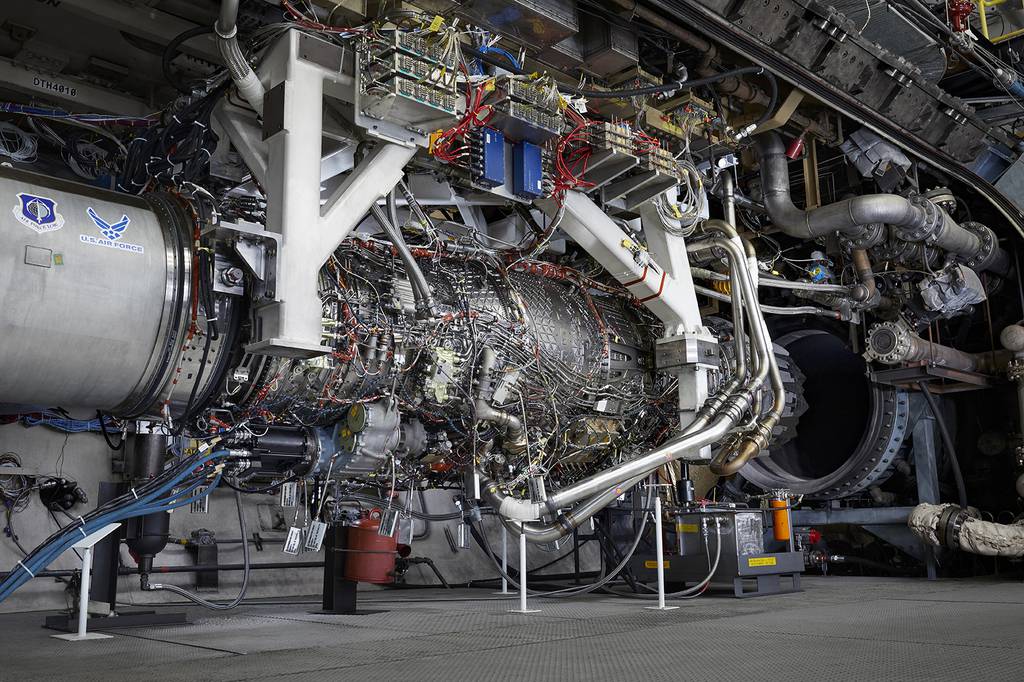
Given the way P&W has really leaned hard into pushing EEP, 101 seemingly lagging a bit behind 100 in testing/development milestones, GE's decision to jump in with ceramic matrix composites, and the few morsels of comments by people in the know, it looks like winning a competitive RFP might be the one thing GE is most confident in.[snip]...and the A100 has to beat the P&W A101 via a competitive RFP and contract award.
Regarding GE apparent “lead in testing”, you have to be aware that the third phase was altitude testing at AEDC in Tullahoma, TN. This government owned and run facility is the only one in the country capable of simulating inflight inlet and exhaust engine test conditions across the design flight conditions, with both GE and P&W decommissioning their altitude test cells many years ago. With GE scheduled to run their XA100 at AEDC first, P&W has to wait their turn until the facility configured for AETP test is available. The AEDC tests are scheduled months and years in advance.Given the way P&W has really leaned hard into pushing EEP, 101 seemingly lagging a bit behind 100 in testing/development milestones, GE's decision to jump in with ceramic matrix composites, and the few morsels of comments by people in the know, it looks like winning a competitive RFP might be the one thing GE is most confident in.[snip]...and the A100 has to beat the P&W A101 via a competitive RFP and contract award.
Ultimately, going for an option from both companies may be desirable outcome. P&W's EEP upgrade may be the only workable option for F-35Bs (I can't imagine anyone wants the bill to re-engineer the nozzle for a three-stream turbine) and would be an accessible option for many of the hundreds of export F-35s whose owners may be looking for a more affordable upgrade down the road. Meanwhile, USAF and USN (plus spendier A/C operators) get the superior AETP performance via A100. Sure it costs more, but it also gives the overall program redundancy in case either engine suddenly experiences major issues. Or discovers more Chinese magnets.
The AEDC bottleneck is a fair point to raise, but GE's Phase 1 testing at their facility and AEDC wrapped up nearly a year of tests in November of last year, P&W's Phase 1 testing had only started in October of last year. GE now says they've completed Phase 2, but we haven't heard when Pratt's Phase 1 will end yet. This is not to say P&W is struggling or in a bad place with their design, I'm not saying its a dealbreaker. If you wish, you may dismiss the current state of the two companies' test programs entirely and my point still stands: GE seems more confident in their AETP and is making a good case for it, Pratt seems to favor their EEP.Regarding GE apparent “lead in testing”, you have to be aware that the third phase was altitude testing at AEDC in Tullahoma, TN. This government owned and run facility is the only one in the country capable of simulating inflight inlet and exhaust engine test conditions across the design flight conditions, with both GE and P&W decommissioning their altitude test cells many years ago. With GE scheduled to run their XA100 at AEDC first, P&W has to wait their turn until the facility configured for AETP test is available. The AEDC tests are scheduled months and years in advance.Given the way P&W has really leaned hard into pushing EEP, 101 seemingly lagging a bit behind 100 in testing/development milestones, GE's decision to jump in with ceramic matrix composites, and the few morsels of comments by people in the know, it looks like winning a competitive RFP might be the one thing GE is most confident in.[snip]...and the A100 has to beat the P&W A101 via a competitive RFP and contract award.
Ultimately, going for an option from both companies may be desirable outcome. P&W's EEP upgrade may be the only workable option for F-35Bs (I can't imagine anyone wants the bill to re-engineer the nozzle for a three-stream turbine) and would be an accessible option for many of the hundreds of export F-35s whose owners may be looking for a more affordable upgrade down the road. Meanwhile, USAF and USN (plus spendier A/C operators) get the superior AETP performance via A100. Sure it costs more, but it also gives the overall program redundancy in case either engine suddenly experiences major issues. Or discovers more Chinese magnets.
There is still the program for the NGAD engine which both have contracts for.Or, GE is beating the their XA100 horse (in their media releases) because it is their only hope…..
The Air Force exercised NGAP options that were built into its AETP contract in 2018 itself.Or, GE is beating the their XA100 horse (in their media releases) because it is their only hope…..
And then give Pratt the engine for the NGAD. Of course all this leaves the F-35B out in the cold. . .I honestly want XA100 AETP to win over F-135 EEP
